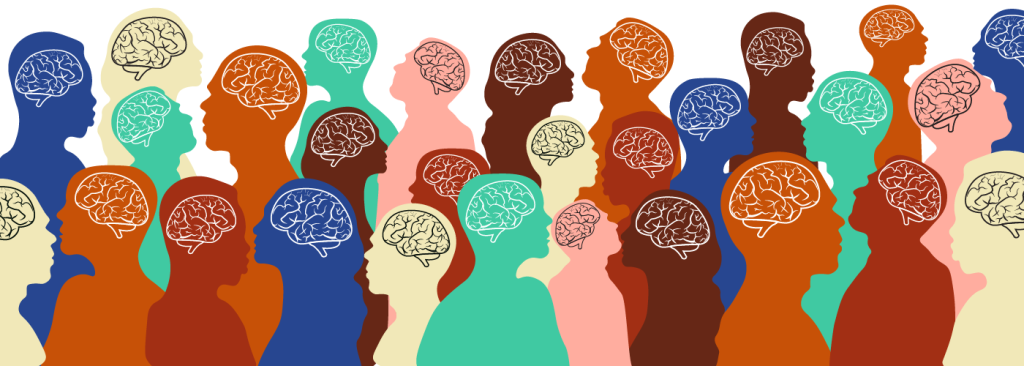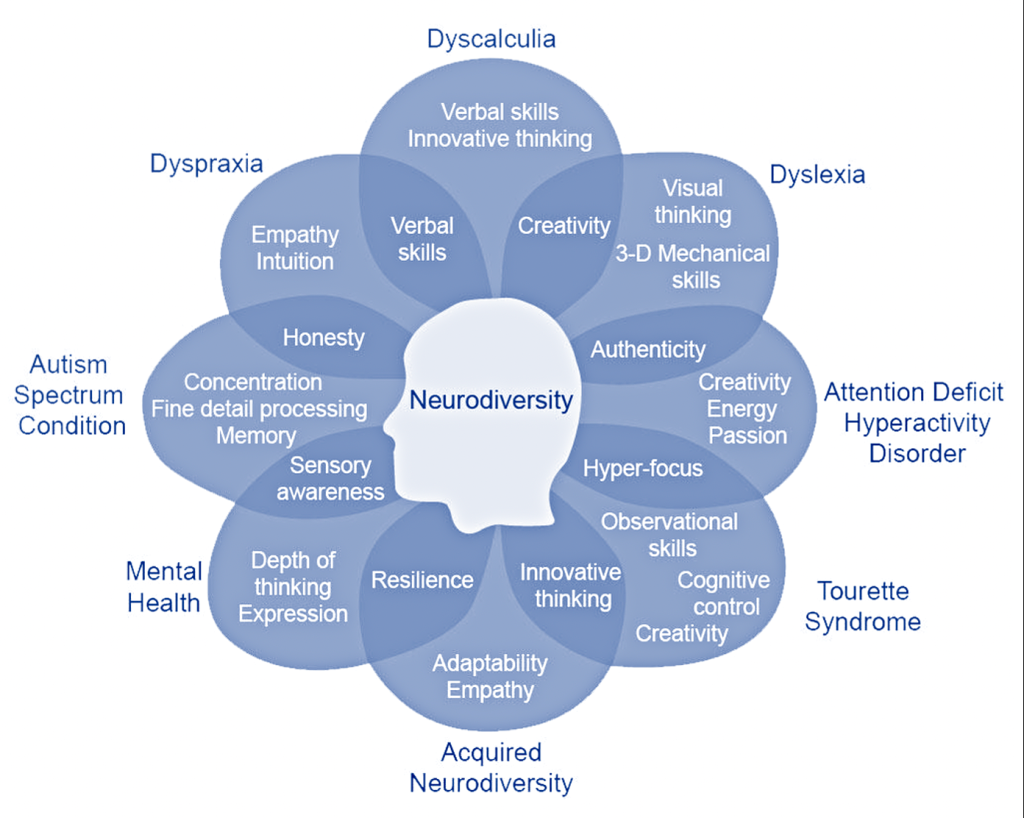The Inclusive Workplace Series

When considering diversity and inclusion in the workspace, oftentimes our first thoughts are towards racial, gender, or physical disability prejudice or discrimination. It’s easy to get caught up in the physical manifestation of diversity, but one of the core principles of diversity and inclusion is that there is more to a person than how they appear to others. By limiting the conversation to skin-deep qualities, we tend to inadvertently shut out an entire group of disadvantaged individuals: the neurodivergent.
In recent years, the concept of neurodivergencehas drawn increasing levels of attention in workplace diversity and inclusion discussions, especially with numerous big-name companies (i.e., Microsoft and Ford) taking specific hiring initiatives for the neurodiverse population. But what exactly does neurodivergent mean? And more importantly, what does it mean for employers and what should they be doing about it?
Starting off addressing the first big question, neurodivergent or neurodivergence, originating from the word neurodiversity, is an umbrella term referring to anyone who falls outside the lines of neurotypical. More specifically,according to Cleveland Clinic, neurodivergent is “a nonmedical term that describes people whose brain develops or works differently for some reason. This means the person has different strengths and struggles from people whose brains develop or work more typically (neurotypical). While some people who are neurodivergent have medical conditions, it also happens to people where a medical condition or diagnosis hasn’t been identified.” Essentially, neurodivergent means “different brain,” and rather than there existing a clearcut black-and-white separation between different and normal brain function, it can be viewed as a spectrum that people can fall anywhere on depending on the severity of their identified (or unidentified) mental illness (or lack thereof).

As we explore and increase our comprehension of that different-ness, we’ll first acknowledge the strengths and talents that accompany it, which segues us into our second big question. According to Harvard Business Review’s “Neurodiversity as a Competitive Advantage,” someone on the more different end may have a unique ability for understanding complex mathematics, recognizing obscure patterns in data, and/or memorizing intricate details. Moreover, neurodiverse individuals may also possess an unmatched level of concentration and a boundless imagination. Paired with their predisposition for pattern recognition and memorization, that different-ness in brain function/development allots a level of creativity and creative insight exclusive to the neurodiverse population.
Unfortunately, these special talents and inclinations frequently go unrecognized or overlooked due to the biases and ignorance that surrounds the neurodiverse community; these social stigmas are often centered around the limited interpersonal bandwidth of the neurodivergent. Since the interpersonal aversion can present itself in a number of ways depending on the underlying cause of the divergence, employers as well tend to inadvertently fall into this stigmatization. Thus, potentially leaving the paper-perfect candidate failing to make it past preliminary interviews when they don’t necessarily fit the personality archetype sought after by the company.
Data support these claims: CNBC news reports that the unemployment rate for neurodivergent individuals in the US is as high as 30% to 40% percent (compared to the 10.1% for disabled persons and a US national average of 3.7%) and The Institute of Leadership & Management reported in 2020 that up to 32% of UK employers would be “uncomfortable” hiring someone with ASD (autism spectrum disorder).
So, how can you work to combat these statistics beginning with your company, but equally importantly, why should you want to? Research by Accenture shows that organizations that hire people with disabilities have 28% higher profit revenues, along with higher rates of retention, engagement, and creativity among their workers, when compared to their less diverse competitors. Moreover, to ensure that your company is making genuine strides towards diversity and inclusion, it’s essential to consistently evaluate and re-evaluate any unconscious biases towards the neurodiverse community that may exist in your daily and/or hiring practices.
As with any disability, certain accommodations need to be made to allot maximal productivity and comfort for neurodivergent individuals. According to untapped’s “Neurodiversity Hiring Practices: How to Eliminate Bias,” some simple and easy to implement strategies to combat these biases include offering Americans with Disabilities Act (ADA) training to all employees and reviewing job descriptions/listings for bias. Beyond small changes, it’s also possible to go the extra mile and create specific partnerships and hiring initiatives with non-profit organizations geared towards recruiting neurodiverse talent. EARN (Employer Assistance and Resource Network on Disability Inclusion) summarizes a multitude of successful neurodiverse-specific hiring initiatives by companies of all sizes in the article “Neurodiversity Hiring Initiatives & Partnerships.”
Tying this altogether, neurodivergent is an umbrella term for a wide range of neurological or mental disorders that result in brain function that deviates from the norm. The degree and presentation of this deviation or different-ness varies from person to person and can depend on the underlying cause of their neurodivergent classification. As we’ve come to build our understanding of neurodiversity, we’ve also learned that this comprehension is only the first step in cultivating a truly inclusive workspace environment and maximizing your company’s productivity and profitability. The next steps require ensuring that your company’s practices are free of any potential biases and, if so, implementing the necessary measures to reverse them, as well as recognizing the intersectionality of neurodivergence with other disadvantaged populations. Thus, we have the inclusive cocktail: understand, reflect, and implement.
To learn more about the facts and figures presented in this article, feel free to visit the comprehensive website and links below (bolded websites provide resources for training your employees and de-biasing your practices):
- “What Does Neurodiversity Mean?” What Does Neurodiversity Mean? | Autism Toolbox, http://www.autismtoolbox.co.uk/what-does-neurodiversity-mean.
- “Neurodivergent” Health Library | Cleveland Clinic, https://my.clevelandclinic.org/health/symptoms/23154-neurodivergent
- “Neurodiversity Hiring Initiatives & Partnerships” Neurodiversity in the Workplace | EARN, https://askearn.org/page/neurodiversity-hiring-initiatives-and-partnerships.
- “The Disability Inclusion Advantage” Getting to Equal | Accenture, https://www.accenture.com/t20181029T185446Z__w__/us-en/_acnmedia/PDF-89/Accenture-Disability-Inclusion-Research-Report.pdf.
- “Neurodiversity Hiring Practices: How to Eliminate Bias” Diversity and Inclusion | Untapped,https://www.untapped.io/blog/neurodiversity-hiring-practices.
- Martinez, Sara. “3 Hiring Barriers People with Disabilities Face.” Untapped, Untapped, 5 Apr. 2022, https://www.untapped.io/blog/3-hiring-barriers-people-with-disabilities-face.
- “Inclusion Training for Employers.” Disability Solutions, https://www.disabilitytalent.org/employer-training.
- “12 Neurodiversity Strengths That Come from Thinking Differently.” Texthelp, https://www.texthelp.com/resources/blog/12-neurodiversity-strengths-that-come-from-thinking-differently/.
- “Neurodiversity Is a Competitive Advantage.” Harvard Business Review, 27 Aug. 2021, https://hbr.org/2017/05/neurodiversity-as-a-competitive-advantage.

